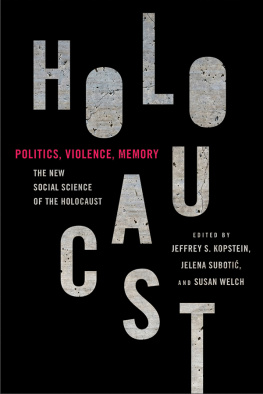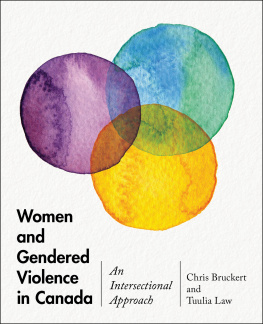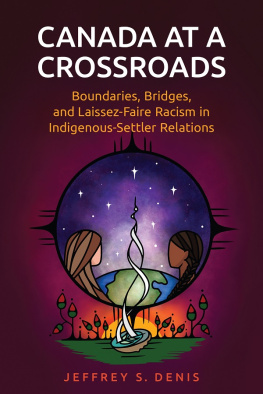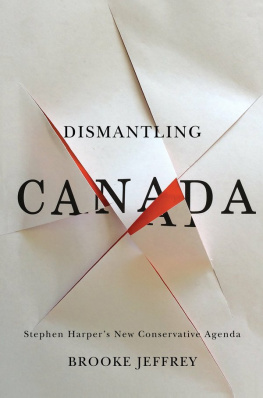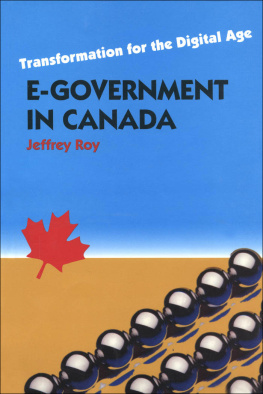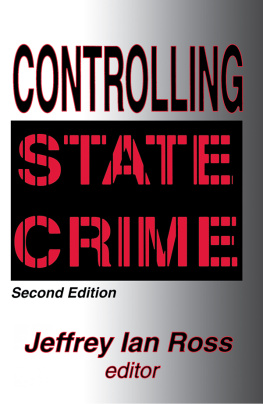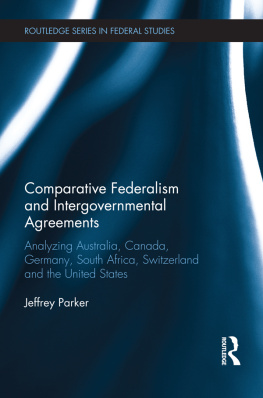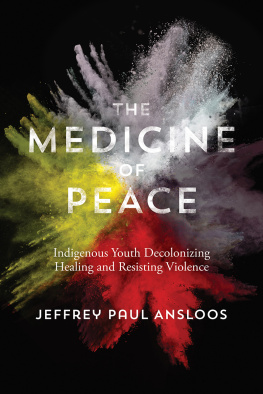Originally published in 1995 by Oxford University Press
Published 2004 by Transaction Publishers
Published 2017 by Routledge
2 Park Square, Milton Park, Abingdon, Oxon OX14 4RN
711 Third Avenue, New York, NY 10017, USA
Routledge is an imprint of the Taylor & Francis Group, an informa business
New material this edition copyright 2004 by Taylor & Francis.
All rights reserved. No part of this book may be reprinted or reproduced or utilised in any form or by any electronic, mechanical, or other means, now known or hereafter invented, including photocopying and recording, or in any information storage or retrieval system, without permission in writing from the publishers.
Notice:
Product or corporate names may be trademarks or registered trademarks, and are used only for identification and explanation without intent to infringe.
Library of Congress Catalog Number: 2003064571
Library of Congress Cataloging-in-Publication Data
Violence in Canada : sociopolitical perspectives / Jeffrey Ian Ross, editor ; with a new introduction by the editor and foreword by Ted Robert Gurr. 2nd ed.
p. cm.
Includes bibliographical references and index.
ISBN 978-0-7658-0807-3 (alk. paper)
1. ViolenceCanada. 2. CanadaSocial conditions. 3. CanadaPolitics and government. I. Ross, Jeffrey Ian.
HN110.Z9V575 2003
303.60971dc22
2003064571
ISBN 13: 978-0-7658-0807-3 (pbk)
Violence in Canada: Ten Years After
JEFFREY IAN ROSS
Violence is endemic to all societies. Understanding its causes and effects can help in devising policies and practices towards violence reduction and the minimization of injury, pain, suffering and death for both men and women. This new introductory chapter contextualizes and updates the information in the collected essays of Violence in Canada: Sociopolitical Perspectives. In order to accomplish this task, I critically present and interpret reviews, explain the sales of my book, provide my rationale for pursuing a second edition and this particular format, examine the literature that has accumulated over the past seven years on the subject of violence in Canada, and then conclude with a discussion about the nature of violence that has occurred in Canadian society since the books publication. In short, this chapter provides the kind of information which should help readers better understand Violence in Canada and the various reactions to it.
REVIEWS OF VIOLENCE IN CANADA
How do you measure the success or failure of a book? Perhaps the amount of supportive reviews can tell us something? Sixteen reviews of Violence in Canada were published. These appeared in mainstream newspapers (e.g., Inniss, 1995), trade magazines (e.g., Robinson, 1995), and the majority in scholarly journals. These assessments were printed in publications emanating from both Canada and the United States and were written by individuals from both countries. Some reviews were mainly descriptive (e.g., Canadian Journal of Criminology, 1997); some highly supportive (e.g., Taylor, 1997), and a few writers were highly critical (e.g., Bickler-Robertson, 1997).
PRAISE
There was ample praise for the book. Most of this centred on its timely nature, the nature, the critical approach of the book, and the comprehensive nature, of Violence in Canada, the quality of the book, and the data, historical examples, and theory that was marshalled within it.
First, many reviewers commented on the timeliness of my book (e.g., Corrado, 1997). One said that Violence in Canada is timely and much needed to resolve the controversial debate on violence in Canada (Ferguson, 1998). Another wrote that the book is timely and relevant to the readers... who are concerned about the protection of persons, property, and communications (Robinson, 1995).
Second, some individuals believed that Violence in Canada made a valuable addition to the existing knowledge base of the subject. For instance, McCormick said that the book makes an important contribution to our understanding of violence in Canadian society. the reader is left with a broad representation of the multiple character of violence (McCormick, 1997). In a similar vein, Hackler suggested that In general, these essays summarize material effectively and offer a breadth of discussion helpful to those new to the field as well as to those already knowledgeable (1998).
Third, some reviewers noted how the book should be a model for other violence researchers. One said that it was an exemplary project which ought to recommend itself to other societies caught up with similar threats and anxieties (Taylor, 1997). And another remarked that this text is a welcome addition to the field (Title, 2000/2001). Weeber stated that this collection is a benchmark survey of what is known about violence in Canada. It should indeed stimulate vigorous debate. Among humanists that debate might consist of whether or not Canada can still be viewed as a model of a decent and just society (1998).
Fourth, a handful of individuals were favorably disposed to the critical quality of Violence in Canada. Taylor commented that overall the volume is an effective critique of the complacency of some Canadian commentators about Canada the peaceable kingdom (Taylor, 1997). This sentiment was echoed in Corrados comment that the book accomplishes Rosss stated goal of providing a counterpoint to the examination of violence in the United States (Corrado, 1997), and that the effort addresses several key controversies in the current public and academic debates about violence in Canada (Corrado, 1997). Hackler adds, Some of the chapters in this book will challenge traditional views when they use the collective approach (1998). And, The deliberate sociopolitical perspective taken by some of the authors in this collection makes the book more useful in that it challenges many conventional views (Hackler, 1998).
Fifth, many reviewers favorably noted the comprehensive approach of the volume. Ross is to be congratulated on his achievement in collecting this wide range of material together, penned Taylor (1997). Inniss added, Ross has provided a wealth of information. It will undoubtedly be combed through by public policy workers with the avidity of forensic specialists searching the scene of a murder. They will find a lot to keep them thinking (1995). Russell, writing in the journal





